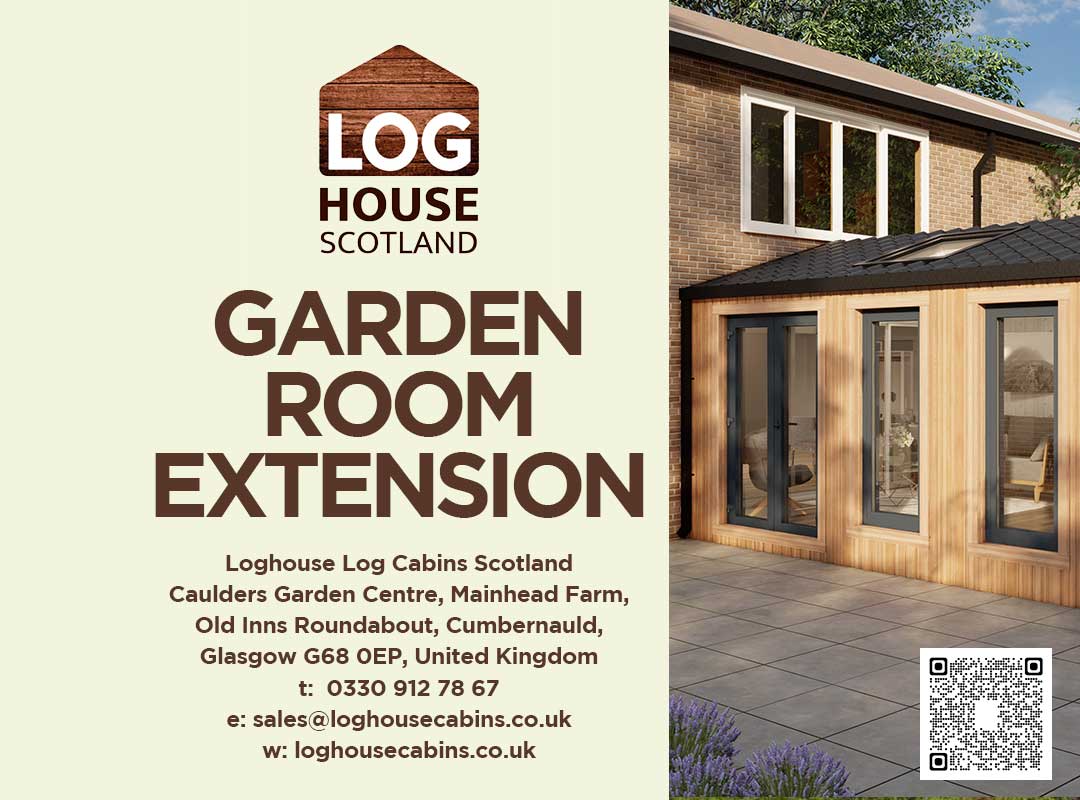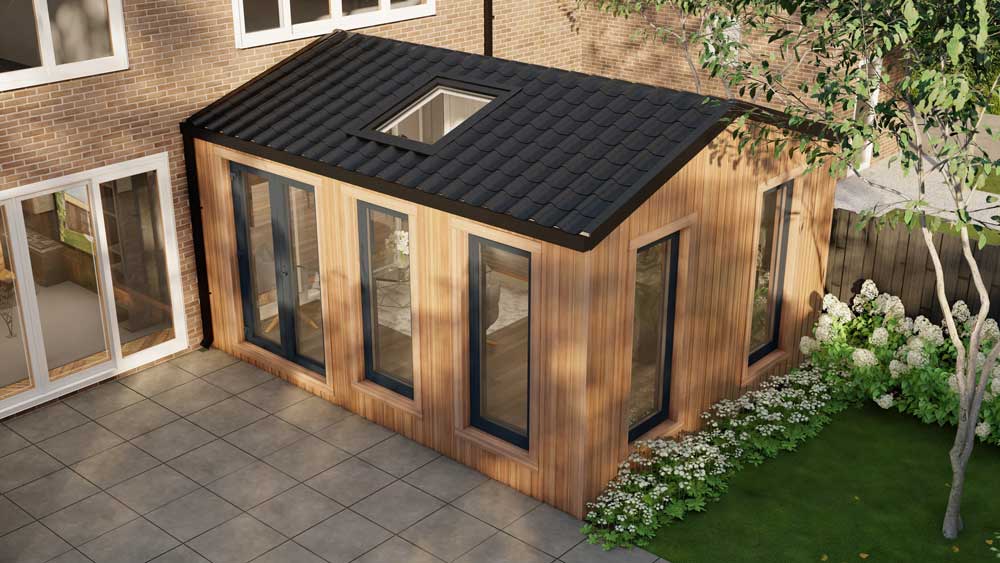Table of Contents
- What Are the Reasons for Extending My Garden Room?
- Understand Planning Permits
- Design Your Garden Room Extension Now
- Construction and Installation
- Interior Decorating and Furnishing
- Maintenance and Upkeep
- Environmentally Sustainable Considerations
- Maximising Your Garden Room Extension: Tips and Tricks
Garden Room Extension – Over recent years, creating additional living space on one’s property has experienced an exponential surge in popularity – and garden room extensions are at the forefront. More homeowners recognise the numerous possibilities and conveniences, evolving a garden room extension from an outbuilding into a dynamic multi-purpose space.
What Are the Reasons for Extending My Garden Room?
Garden room extensions provide homeowners with many advantages that have led to their growing popularity. Modern Garden Room extensions provide an excellent way of adding space without incurring the high costs and headaches associated with moving home; whether used as an office for remote work, creative studio, gym space or even just an aesthetically pleasing retreat from everyday living – their versatility makes garden room extensions invaluable!
Add-on extensions can dramatically enrich your lifestyle. Imagine walking out into your garden, coffee in hand, to a greenery-framed office and dedicated workspace or unwinding after an exhausting day in a personal sanctuary just steps from your back door – these additions can do more than simply expand the size of your backyard!
Garden room extensions not only enhance lifestyle improvements, but they can also increase property value. Potential buyers would likely appreciate an added, versatile space that can easily meet their individual needs – making this an excellent investment if homeowners plan to sell in the future. (More info on – Garden Room Log Cabin)
Understand Planning Permits
Understanding planning permissions before embarking on any garden room extension project is of utmost importance. Garden room extensions typically fall under “permitted developments”, meaning they don’t typically require planning approval if certain conditions and limitations relating to size, location, and use are met.
If you are going to build an extension or make other changes to your house, you may need planning permission from your local authority.
The most common reasons for needing planning permission are when you want to:
- Build an extension which is more than 40 square metres (this includes new and any existing extensions)
- Change how the land is used, like converting a garage to a place of business. This is known as a “material change of use”.
Generally, you do not need planning permission for minor changes to your house. – More info HERE on www.mygov.scot
These guidelines should only be seen as general rules; specific regulations may differ based on your location and type of property. Always contact your local planning authority in order to ascertain any necessary permits and permissions necessary for your project – otherwise, fines or forced modification/removal could ensue. Understanding planning permissions is not only required legally but can also ensure a seamless garden room extension project without any unexpected surprises.
Design Your Garden Room Extension Now
At this stage of your garden room extension project, the design phase allows your dreams and ideas to take form. Here, you can decide on its size, placement, orientation and other important details – for instance, consider what portion of your garden you want to be dedicated to the room extension as well as any natural light available or any stunning views available to take advantage of when considering an extension’s orientation. (More info on – )
Your garden room’s purpose will have a significant bearing on its design. If it serves as a home office, for example, ample natural light and an idyllic corner may be key; while for gym equipment needs space must also be considered. Finally, for relaxation purposes, a view of your garden could play an essential part. Aesthetic considerations play a pivotal role in designing your garden room extension. Are you drawn towards modern minimalism or rustic cosiness? Your selection of materials such as glass and metal or warm wood will have a significant impact on both its look and feel; while an extension should ideally blend in seamlessly with existing properties while adding its own distinctive character.
Construction and Installation
Construction and installation of a garden room extension involve several steps, beginning with laying a solid foundation and continuing through to installing doors and windows as well as finishes. Insulation is key in order to make this space usable all year round; properly insulated garden rooms remain cool in summer yet warm in winter, offering greater versatility than their counterparts.
(More info on – Garden Room vs Conservatory)
Integration of utilities such as electricity and plumbing should also be prioritised during planning. Do you require power for lighting, heating or appliances, as well as water access requirements? Planning early will save time and money later on. Construction provides two options when it comes to installation: professional or DIY. A professional installer tends to be quicker, less stressful, and often comes with guarantees, while DIY provides cost savings opportunities if the necessary skills and time are available.

Loghouse Log Cabins Scotland, Caulders Garden Centre, Mainhead Farm, Old Inns Roundabout, Cumbernauld, Glasgow G68 0EP, United Kingdom, Phone: 0330 912 0420, Email: sales@loghousecabins.co.uk, Website: www.loghousecabins.co.uk | [Driving directions]
Interior Decorating and Furnishing
Once your garden room extension has been constructed, the fun task of furnishing and decorating begins! Here is where your personality can truly come through; be it a sleek office with desk and ergonomic chair or creative studio complete with easels, inspiration boards and plush seating; the choice is yours.
One key tip for creating an integrated garden room extension is to ensure a seamless transition from your main house and the extension. You can do this by matching interior style and choosing complementary colour schemes; but be wary of creating an exact replica – rather it should act as an organic continuation of what was already there – but remember this space belongs to you and should reflect your individual preferences and lifestyle above anything else. (More info on – Rooms for gardens)
Maintenance and Upkeep
Any beautiful space needs constant care, including your garden room extension. For maximum longevity, regularly clean windows and surfaces to remove dust and grime, as well as check for wear and tear after harsh weather conditions. (More info on – DIY Log Cabins) Treat wooden components of the room regularly while checking roofing can prevent leaks; keep air flowing freely around the space in order to reduce dampness in order to safeguard both structure and interior from dampness damage. A well-kept garden room extension will make you proud every time you use it! With proper care, it could last decades more!
Environmentally Sustainable Considerations
Sustainability should always be at the heart of construction practices and your garden room extension should not be an exception. When possible, utilise eco-friendly materials like sustainably-sourced timber or recycled materials, while minimising waste during construction and recycling leftovers whenever possible. Furthermore, energy efficiency measures such as installing quality insulation, double-glazing windows or solar panels may further help minimise your footprint on the environment. Integrating natural elements like plants or water features into a structure can create a more relaxing, natural-feel space, as it blends better into its surrounding garden surroundings, offering a tranquil retreat while having minimal impact on the environment.
Maximising Your Garden Room Extension: Tips and Tricks
Your garden room extension can be an adaptable space, and there are various ways you can make the most of its potential. Smart storage solutions can keep the area tidy while remaining multifunctional; use natural light by positioning work desks or reading chairs near windows; opt for furnishings with multiple purposes that can easily adapt the room for different activities or be easily moved around; opt for furnishings that serve multiple functions simultaneously to maximize this area’s flexibility and take full advantage of natural lighting sources.
Seasonal changes provide opportunities for adaptation. Warm, cosy textiles can make your garden room extension an inviting space in winter; in contrast, light airy fabrics make summer more manageable. Finally, adding personal touches like artwork, photos or sentimental objects will transform this extra space into a true sanctuary within your home.
Building your ideal garden room extension can be an enjoyable and fulfilling journey from start to finish, from the initial concept all the way through interior decoration. By taking care in its design and material selections, a garden room extension can enhance your lifestyle, increase property values and provide a space that fits in seamlessly with both your needs and personality. With these tips and insights at your fingertips, now is the time to bring your vision of an idyllic garden room extension into being. Get in touch with Loghouse to start planning today so you can look forward to enjoying it as part of your unique outdoor retreat!
Frequently Asked Questions
Q: What is a Garden Room Extension?
A: A garden room extension is a self-contained building constructed in the garden area of a property. It provides additional living space that can be used for a variety of purposes such as a home office, studio, gym, or relaxation area.
Q: Do I need planning permission for a Garden Room Extension?
A: Garden room extensions often fall under “permitted developments,” meaning they usually don’t require planning approval if they meet certain conditions related to size, location, and use. However, it’s always advisable to check with your local planning authority to be certain.
Q: How much does it cost to build a Garden Room Extension?
A: The cost to build a garden room extension varies based on the design, size, materials used, and whether you choose a DIY approach or hire professionals. It’s advisable to budget accordingly and include extra for any unforeseen expenses.
Q: How to maintain a Garden Room Extension?
A: Maintenance involves regular cleaning of windows and surfaces, treating wooden components, checking for any wear and tear, and ensuring proper ventilation to prevent dampness. These steps help prolong the longevity of your garden room extension.
Q: How to maximize the use of a Garden Room Extension?
A: By incorporating smart storage solutions, optimising natural light, and adapting the room for different activities or seasons, you can maximize the use of your garden room extension. Adding personal touches can also transform the room into a true sanctuary within your home.
Related search terms: garden office, garden office log cabin, garden office ideas, garden rooms Scotland, garden studio, garden office conversion, garden buildings, garden rooms Dublin, garden pods, garden rooms for sale, garden cabin, garden annex, garden office planning permission, garden room cost, garden rooms with toilet, garden rooms with bathroom, wooden garden rooms, garden room furniture, garden room insulation, garden room lighting, garden room decor, garden room interior design, garden room electricity, heating garden room, cost to build garden room
Ever wondered about “How To Increase Your Hotel Occupancy Rate“?….Check out our latest blog post for details.



